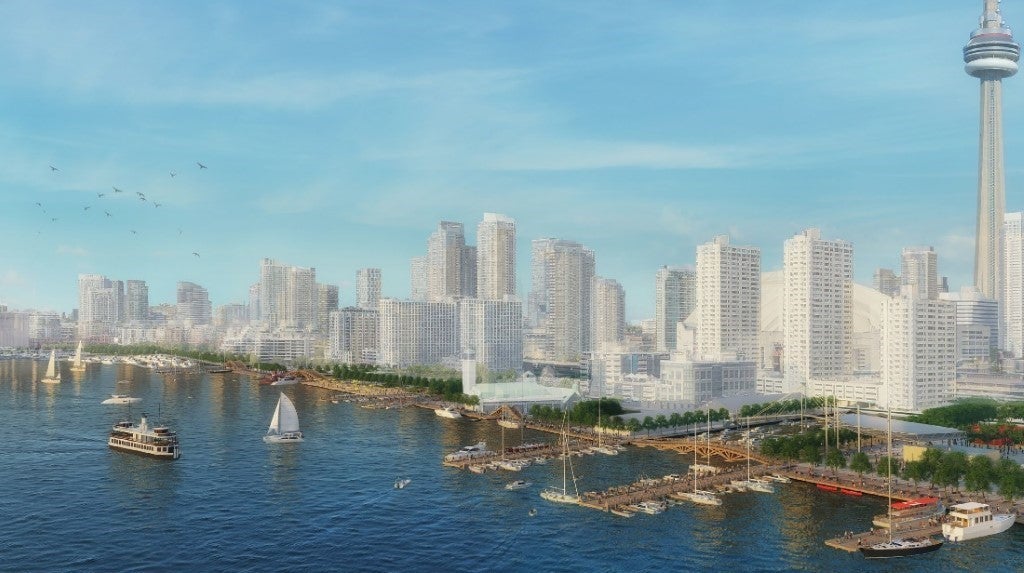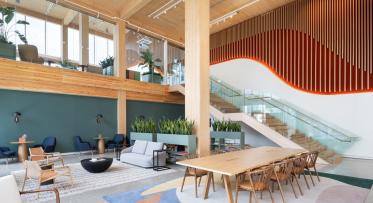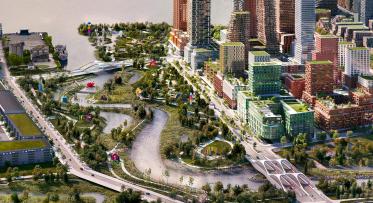Writing the Next Chapter in the Story of Our Waterfront
“The most compelling proof of what’s possible in the years ahead is how much has happened so far.”
-George Zegarac, President and CEO, Waterfront Toronto
PUBLISHED: MARCH 9, 2020
By: Kaleigh Wisman
With almost two decades of achievement propelling us forward, Waterfront Toronto is positioned to take the next steps in creating one of the best waterfronts in the world. In our 2020-2025 Strategic Plan, we cast our gaze towards four aspirational projects that will continue to unlock the potential of Toronto’s waterfront: Destination Playground, Jack Layton Ferry Terminal, Waterfront Walk and a Landmark Institution.
Destination Playground
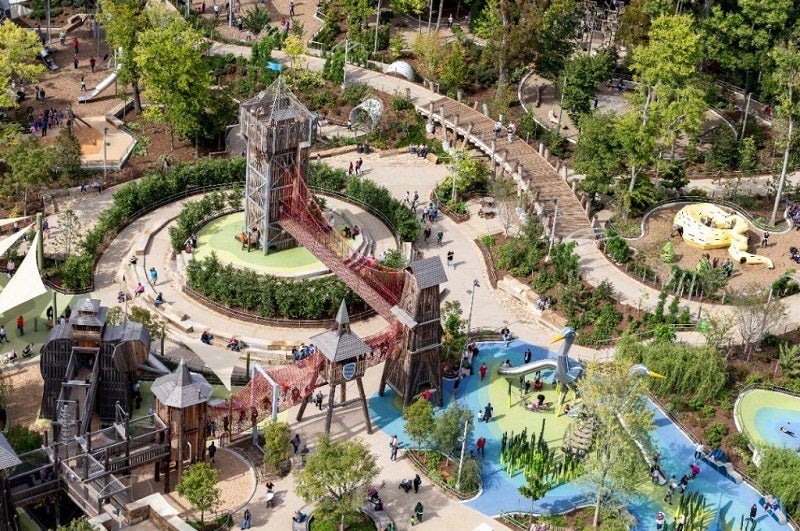
Gathering Place, a destination park in Tulsa, serves as an inspiration for what we plan to build on Villiers Island in the Port Lands. Photo Credit: Shane Bevel.
The concept of a destination playground is relatively new and can most easily be described as a large, immersive play environment designed to entertain children of all ages and abilities. A growing list of cities around the world have created immersive play environments for children, emphasizing movement, exploration and healthy risk-taking. Maggie Daley Park on Chicago’s waterfront is an exemplar—attracting millions of residents and visitors yearly thanks to its engaging and accessible features.
As part of the transformation associated with the Port Lands Flood Protection Project, we’re working with the City of Toronto to plan and develop 25 hectares of green space and parkland in the Don River Valley around the river’s mouth. Located within this 25 hectares, is the area where we plan to build Toronto’s own Destination Playground—a first-in-Canada free attraction for residents and visitors, featuring leading-edge playground equipment and design and nature play opportunities.
We’re working to engage funding partners who share our vision of a new favourite place for children and families—a lively complement to the network of parks in the river valley and along the lakeshore.
Jack Layton Ferry Terminal
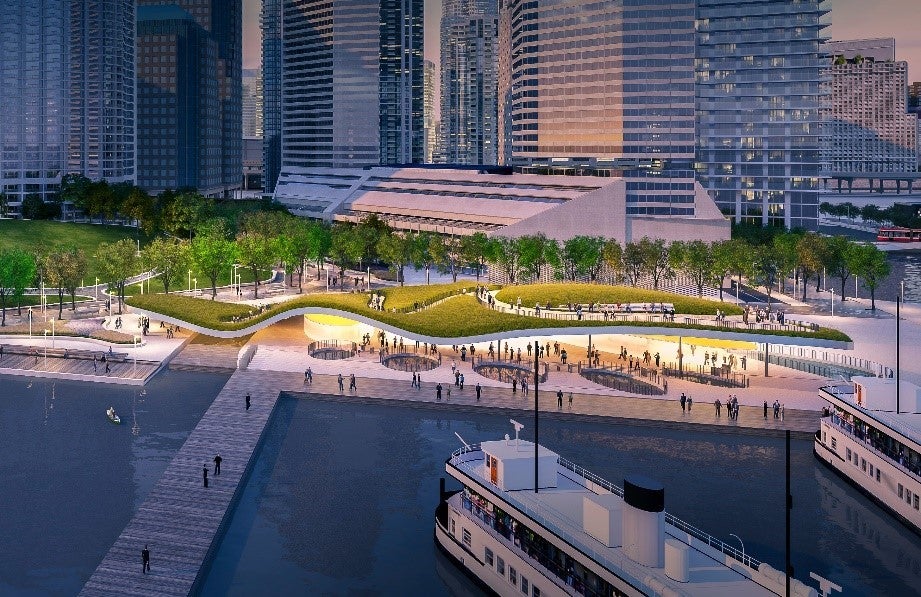 A rendering of the reimagined Jack Layton Ferry Terminal.
A rendering of the reimagined Jack Layton Ferry Terminal.
One of our goals for the waterfront is to create more urban connections across the harbour. Today the Jack Layton Ferry Terminal works hard to accommodate existing transportation needs but is not equipped to support growing passenger demand. Toronto has an important opportunity to unlock the potential for increased waterborne transportation while strengthening a sense of connection between downtown and the lake.
In 2015, Waterfront Toronto, in partnership with the City of Toronto, launched an international design competition to establish a compelling vision for an expanded Jack Layton Ferry Terminal and adjacent Harbour Square Park. The master plan that emerged from the competition features an expanded terminal building with an accessible green roof, new ferry docks, finger piers and an urban park.
Over the past few years, we have completed some improvements to the site making it more welcoming and functional, such as the new granite entrance promenade that ties into the revitalized Queens Quay. As part of our Strategic Plan, we will collaborate with City of Toronto Parks, Forestry and Recreation to study potential funding and financing models that could help us begin future phases of construction and make the full vision for the Jack Layton Ferry Terminal and Harbour Square Park a reality.
Waterfront Walk
A continuous Waterfront Walk would offer an unbroken route along the downtown lakeshore, dotted with destinations to pause and enjoy.
Increasing public access and mobility along the waterfront is at the heart of our mandate—it is also something that resonates deeply with our stakeholders. When we ask the public about priorities for waterfront revitalization, a continuous promenade is the top answer. Informed by research on exceptional waterfront promenades in cities around the world, we’re exploring a range of design ideas—from boardwalks to bridges—to create a connected and intuitive path along the shoreline.
“The continuous waterfront walk matters because when you can move seamlessly from one end of the waterfront to the other, it makes the place more than the sum of its parts,” says Pina Mallozzi, Vice President Design, Waterfront Toronto. “We’re working to create a connected pathway all along the lake. Many parts of it have already been built by Waterfront Toronto but there are gaps. And the way Toronto has developed, the waterfront is a series of slips and quays—so it’s a little bit jagged. From a design perspective that’s both a challenge and an opportunity.”
We envision the Waterfront Walk spanning an area from the Portland Slip in the west to the Parliament Slip in the east, connecting the naturalized Don River. In addition to making the shore an even more active and inviting space, it would become a more cohesive and connected destination as well as a functional transportation route. “Imagine if you could commute from your home in the Central Waterfront to work in Villiers Island completely on the water’s edge walk," comments Chris Glaisek, Chief Planning and Design Officer.
Landmark Institution
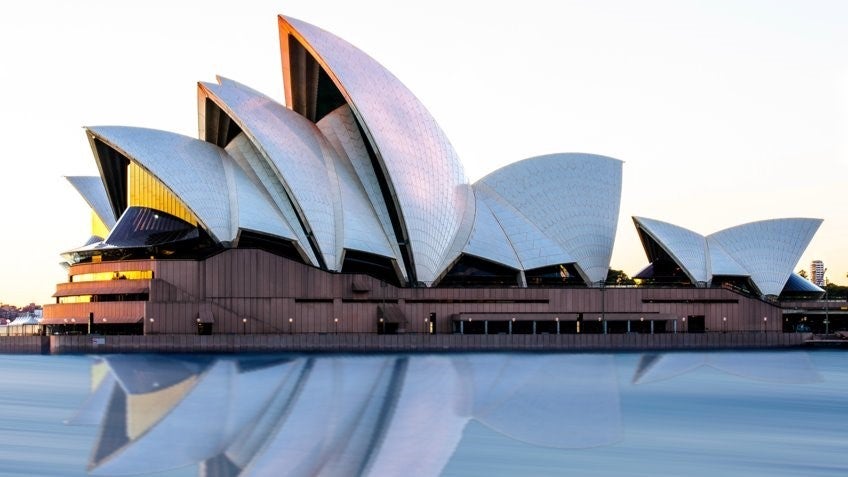
A landmark institution, like the iconic Sydney Opera House, would define and animate Toronto's waterfront.
Exceptional waterfronts feature cultural destinations that become icons of their cities. The best of these—Sydney Opera House is a prime example—come to define their waterfronts, anchoring local economic and cultural activities while communicating a unique urban and national identity to the world.
Several sites on Toronto’s waterfront have the scale and prominence to house a magnetic gathering place, activate the surrounding public realm and catalyze new economic clusters. One possibility for a landmark structure could be an innovative sustainable building that houses a centre of excellence in a distinct field or discipline. It could also be an architecturally significant building that showcases Canadian leadership in an important area.
We are assessing the potential for this project and how we might engage in cross-disciplinary partnerships to make it a reality.
Waterfront Potential
Our 2020-2025 Strategic Plan is an opportunity to take stock of what we have accomplished, what we are currently achieving and what is up next. Our CEO, George Zegarac may have said it best – “A site of neglect just a few decades ago, today the waterfront courses with the life of the city – driving prosperity, sparking creativity and connecting people with the lake and each other. Along with our partners and supporters – and above all, with local communities – we're excited to start writing the next chapter of this remarkable story of transformation.”


